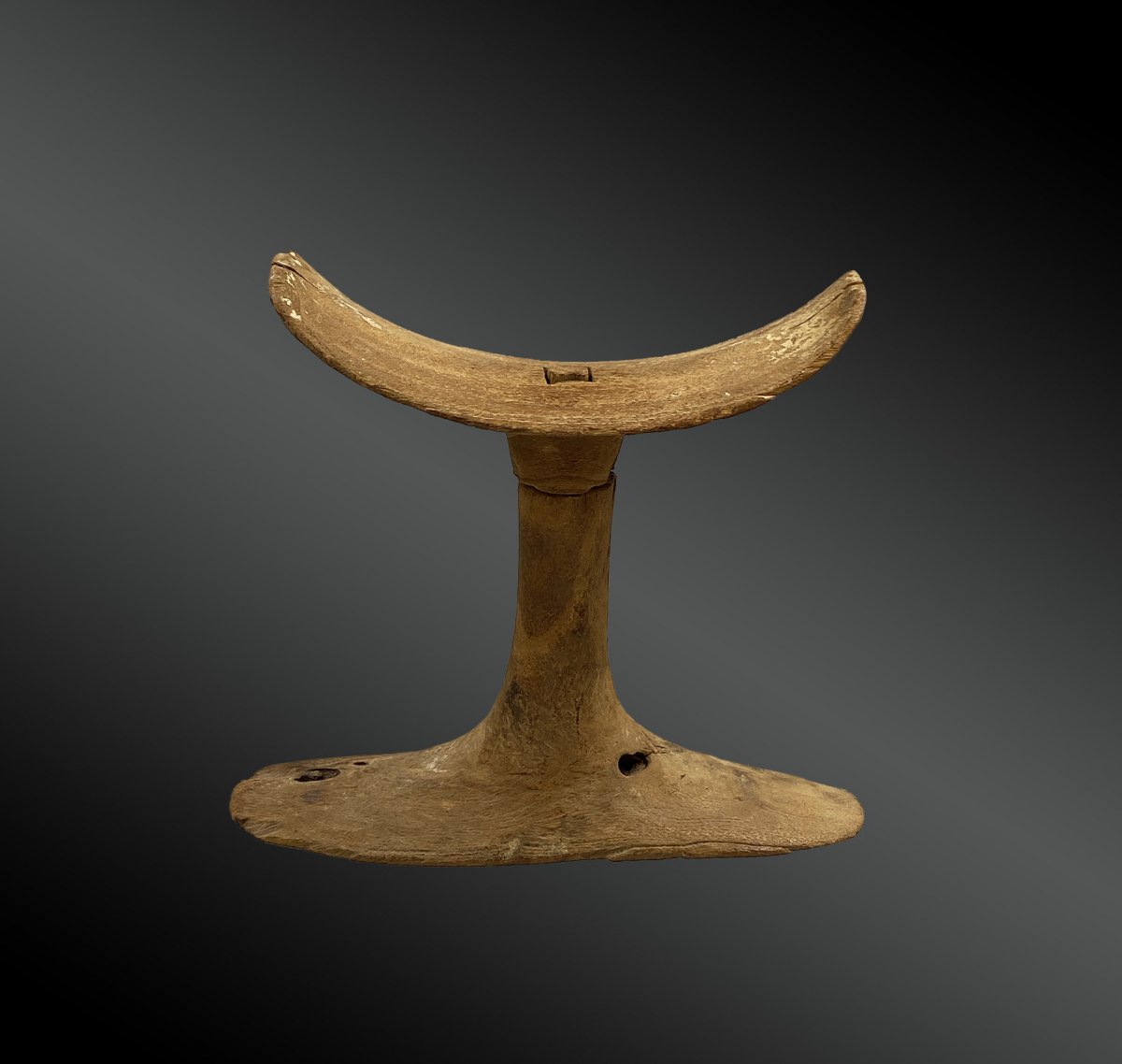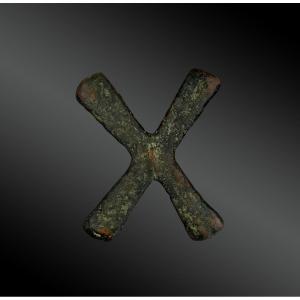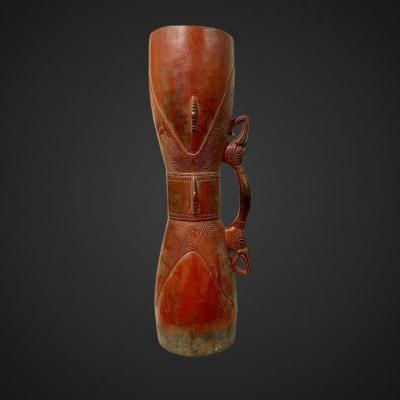Egypt
Old Empire (4th to 6th Dynasties (ca. 2630 - 2250 BC)
Wood
H. :19,5 ; W. :21 ; Thickness :7 cm
This wooden headrest can be dismantled in two parts. The flat base tapers into a cylindrical upright. The upper part used to rest the nape of the neck, and thus the head, is flat, of the same width as the base. The lateral ends are this time slightly raised in two small ears.
This assembly comes from the mortise technique: the upright of the neck rest is carved in a square section notch that forms the tenon; the headrest fits into it.
The headrest fits into it. Small funeral furniture, headrest or bedside table, this neckrest has different names. It could be used for daily use but also reserved for funeral activities.
In the first case, it had a protective role. The neck rest, placed under the sleeper's head, would guarantee the sleeper's imminent awakening while protecting him from all nightmares and harmful situations. In the second case, it served as a mortuary accessory for the preparation and rest of the dead. Once mummified, the head of the deceased was placed on the nape of the neck so as to raise it by twenty to thirty degrees. This prevented the head from becoming detached from the body over time.
This particular inclination also refers to a magical character. Indeed, it is believed that if the head was detached from the body of the deceased, resurrection was impossible.
Some also compare the shape of the upper part to that of the solar boat. Like the sun, Ra led men from the East to the West. This vessel refers to the perpetual cycle: the sun sets to rise again. Sleep and death are two similar states, each referring to a state of passage.
Thus, for the Egyptians, this continuous solar renewal was similar to that of life: Man dies to live again.
Illustration: Scene of purification of the body before its mummification.
Text and photos © FCP CORIDON






































 Le Magazine de PROANTIC
Le Magazine de PROANTIC TRÉSORS Magazine
TRÉSORS Magazine Rivista Artiquariato
Rivista Artiquariato